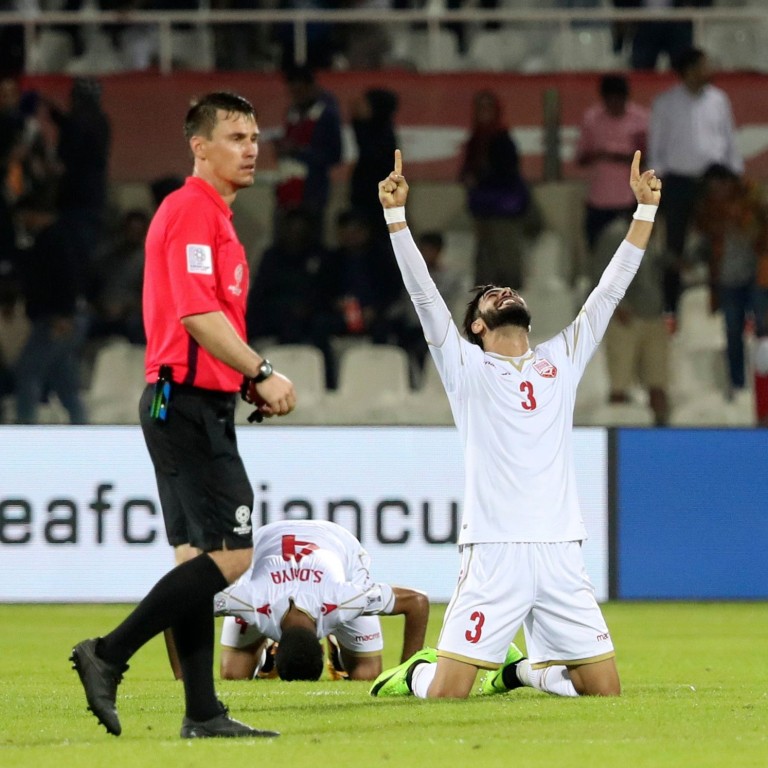
Asian Cup expansion has worked even with India’s dramatic defeat breaking Blue Tigers hearts
- Philippines, Kyrgyzstan and Yemen are all debutants at the 2019 tournament and can still go through to knockouts
- Impending World Cup expansion means Asia needs to be more competitive
There have been many voices of dissent around this expanded AFC Asian Cup bemoaning the added teams and predictable results.
That is both short-sighted and wrong.
Asia needs this expansion to allow 24 of the 47 AFC members a chance to play tournament football.
The new teams have given a good account of themselves too.
Monday saw the start of the final group games and the first chance for a third-placed team to enter the knockout stages.
Among the first of those were India, a team unlikely to have qualified with 16 teams. The Blue Tigers were set to go through until an added time penalty secured three points for Bahrain.
They had given themselves a great chance to make the knockouts for the first time with a shock 4-1 win over Thailand in their first game.
This was history in the making for Indian football.
It was also a bittersweet end to the longest of qualifying journeys.
India and Yemen came through the longest qualification process, starting in the first round, entering the play-offs after finishing bottom of the second round groups and then coming through the third round.
The first round was March 2015. In March 2018 Yemen and the Philippines were the two final teams to book their place in the UAE.
Those two and Kyrgyzstan are debutants at this year’s Asian Cup and they all came through the third qualifying round.
Kyrgyzstan and the Philippines are pointless but both are in a tough group with the tournament favourites South Korea and regional heavyweights China.
They may have lost to both but the opening games could have ended very differently.
Kyrgyzstan took a deserved lead against China and should have been two goals to the good at half-time. They lost because of a couple of goalkeeping errors. Sven-Goran Eriksson’s men impressed against South Korea and only lost 1-0.
Yemen have not impressed in the same way but facing Iran and Iraq was always going to be difficult. They play Vietnam and could still progress to the knockout stage.
Similarly, Lebanon play a North Korea side that has shipped 10 goals in two games while Turkmenistan can get past Oman in their group F finale.
Not one of the teams that would not have qualified under the old 16-team format is mathematically out of it.
For Lebanon, Turkmenistan and Palestine it is only their second Asian Cup and many of these inexperienced teams could still progress.
The worst team so far would likely have been so at a 16-team tournament as they were in Australia four years ago.
People who claim that this has been predictable need to just look at Jordan being the first team in the UAE to book passage to the round of 16 for evidence to the contrary.
Jordan beat Australia in the opening game to kick-start that and it was the shock of the tournament until India thumped Thailand.
The truth is that the tournament needed to expand ahead of the expansion of the Fifa World Cup.
Change was inevitable, just as when the Asian Cup moved to 16 teams in 2004, and we have all known about this for five years. It has not been sprung upon us after the opening ceremony.
The next World Cup, which will be held in Qatar, will be the first to be staged in the Middle East. It may also be the first to feature 48 teams.
The incoming World Cup format will see Asia get 8.5 places and the confederation’s teams are not among the world elite.
Iran, at 29, are the highest in the Fifa rankings. Yemen at 135 are the lowest.
The average Fifa ranking for teams at the Asian Cup is 84 just between Zambia and Congo. Or a couple of places above Oman – who have lost two from two in the UAE.
More competitive football is the only way to raise these rankings.
Critics may want to worry about the bigger issues rather than more teams being allowed to play football. That latest North Korea hammering by Qatar was played out in front of a largely empty Khalifa bin Zayed Stadium in Al Ain because the UAE is among the Middle Eastern nations that are boycotting Qatar.
Despite that the AFC have delivered in the tournament’s tagline of “Bringing Asia Together”.
And in football terms it has been a treat.
The first 24 games produced 66 goals at an average of 2.75 per game. What more do people want?
The final group games will deliver drama, as Bahrain and India proved, and there will be added jeopardy in the knockouts. Plus, some of the goals have been of real quality.
Even better, with the performances of the new faces in this new format, there is hope for the teams like Hong Kong and Taiwan who just missed out.
Roll on the qualifiers for 2023.

